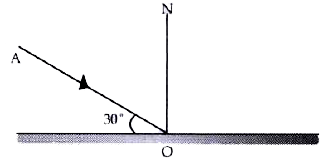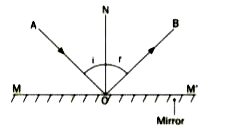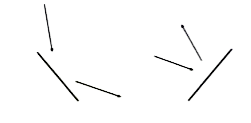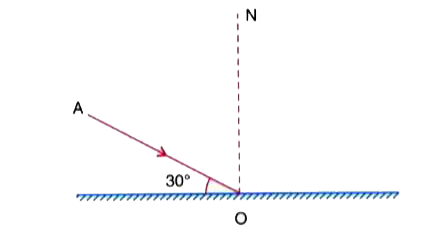The angle formed by incident ray with normal is known as angle of incidence. _____
To determine whether the statement "The angle formed by incident ray with normal is known as angle of incidence" is true or false, we can follow these steps:
1. Understand the Terms:
- Define what an incident ray is. An incident ray is the ray of light that strikes a surface.
- Define what a normal is. The normal is an imaginary line that is perpendicular to the surface at the point of incidence.
2. Identify the Angle:
- The angle formed between the incident ray and the normal line is what we need to focus on. This angle is crucial in understanding the behavior of light when it strikes a surface.
3. Refer to the Definition:
- According to the laws of reflection and optics, the angle formed between the incident ray and the normal is indeed referred to as the angle of incidence.
4. Evaluate the Statement:
- The statement claims that the angle formed by the incident ray with the normal is known as the angle of incidence. Since we have established that this definition is correct, we can conclude that the statement is true.
5. Final Conclusion:
- Therefore, the statement "The angle formed by incident ray with normal is known as angle of incidence" is a true statement.
Final Answer:
The statement is True.
---
- Define what an incident ray is. An incident ray is the ray of light that strikes a surface.
- Define what a normal is. The normal is an imaginary line that is perpendicular to the surface at the point of incidence.
- The angle formed between the incident ray and the normal line is what we need to focus on. This angle is crucial in understanding the behavior of light when it strikes a surface.
- According to the laws of reflection and optics, the angle formed between the incident ray and the normal is indeed referred to as the angle of incidence.
- The statement claims that the angle formed by the incident ray with the normal is known as the angle of incidence. Since we have established that this definition is correct, we can conclude that the statement is true.
- Therefore, the statement "The angle formed by incident ray with normal is known as angle of incidence" is a true statement.
The statement is True.
Topper's Solved these Questions
- LIGHT ENERGYBOOK - ICSECHAPTER - LIGHT ENERGYEXERCISE - EXERCISE-5.1 (Objective Type Questions) (D. Tick the most appropriate answer)
5 Videos
- LIGHT ENERGYBOOK - ICSECHAPTER - LIGHT ENERGYEXERCISE - EXERCISE-5.1 (Objective Type Questions) (E. Match the statements in column A, with those in Column B.)
1 Videos
- LIGHT ENERGYBOOK - ICSECHAPTER - LIGHT ENERGYEXERCISE - EXERCISE-5.1 (Objective Type Questions) (B. Statements given below are incorrect. Write the correct statements)
5 Videos
- HEAT TRANSFER BOOK - ICSECHAPTER - HEAT TRANSFER EXERCISE - Picture Study
2 Videos
- MATTER BOOK - ICSECHAPTER - MATTER EXERCISE - THEME ASSIGNMENT
25 Videos
Similar Questions
Fig. shows an incident ray AO and the normal ON on a plane mirror. The angle which the incident ray AO makes with mirror is 30∘.
Find the angle of incidence.

View Solution
If the following figure, if the angle between the mirror and incident ray is 60∘ find angle of incidence
View SolutionA ray of light passes from glass, having a refractive index of 1.6, to air. The angle of incidence for which the angle of refraction is twice the angle of incidence is
View SolutionIn the figure given the angle between incident ray and the reflected ray is 70∘

Find the angle of incidence.
View SolutionA ray of light passes from vaccum into a medium of refractive index n. If the angle of incidence is twice the angle of refraction, then the angle of incidence is
View SolutionHow does the angle of deviation formed by a prism change with the increase in the angle of incidence ?
Draw a graph showing the variation in the angle of deviation with the angle of incidence at a prism surface.
View SolutionDraw a diagram to show the reflection of a ray of light by a plane mirror. In the diagram, label the incident ray, the reflected ray, the normal, the angle of incidence and the angle of reflection.
View SolutionIn the following figures, draw the normal at the point of incidence and then find out its angle of incidence and angle of reflection

View SolutionA light ray is incident normally on a plane mirror.
What is its angle of incidence?
View SolutionThe following diagram (Fig) shows an incident ray AO and the normal ON on a plane mirror. Find the angle of incidence and angle of reflection.

View Solution
